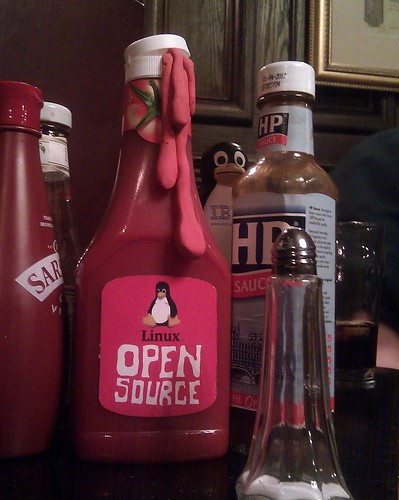
Transforming data is hard. When I joined my current company, there were stupendous amounts of Perl/PHP/Bash/<insert random programming language here> scripts that would run on a cron job and do magic things to our data. They d create reports, they d tell the purchasers when we were running out of stock, they d synchronise data between our Frontend and backend databases, they d collect, they d collate, they d do everything and anything.
Except, with all these scripts, in all these random languages, written by a multitude of previous developers (at different skill levels), they weren t particularly maintainable (and sometimes, they weren t particularly readable or understandable either imagine a 6000 line perl script that pretty much ran different permutations of the same data over and over again)
Enter Pentaho, and specifically it s
Kettle project. (since renamed Pentaho Data Integration ), a tool that lets you manipulate your data in pretty much any way you can imagine, in the simplest and easiest way imaginable.

That s right, it s a GUI for data manipulation.
I know a lot of you are probably sceptical right now. The first time I ever saw this was when a previous boss of mine put it forward as a potential solution for one of our problems (getting our orders from the front end database down to the office/warehouse). I saw it, and I thought GUI? Nah, that s not how real programmers do things! , so after the development team put forward another proposal to solve this, and it got accepted, I thought I d never see the thing again.
That was until my current boss started playing with it, trying to work out what it was doing so that he could get these evil GUI based scripts into something manageable, like nice, pretty code. Thing s, when my boss plays with things that he doesn t know about, he tends to read up, research, and, 9 times out of 10, change his mind.
We wiped the previous server (it was rather noisy! We re glad it s no longer switched on!) and set up a new server to house our BI platform . Starting off with a few scripts, my boss learnt to love this tool, and then, as I m his 2nd in command (aka general lackey) started making me learn how to use it.
Again, I was sceptical, I didn t want to learn, and I put up resistance, but my boss was going away for nearly a month, and by this time, a few of our key business processes relied on Kettle, so, grudgingly, I sat down, and started to learn.
You may be wondering now, why I started off this story talking about all those magical and wonderful scripts that no one seemed to know the inner workings of. These scripts, as I ve already mentioned were unwieldy, and at times, god-damned awful. The plan was to move them to the BI system (as my boss had been doing already).
I like to think of Kettle as a bridge between the process-flow diagram, and the code. I started converting these scripts, and I was astonished by the fact that most of the conversions I was doing was converting a long perl script into 3 or 4 Integration steps
I m totally besotted with this program now. Any time I have to do data manipulation, I turn to it. I can t describe how (once you ve got used to it s quirks) easy it is to use, how simple it is, and how much it just makes sense. Best of all, most of those evil scripts are gone now, and replaced with pretty diagrams that do the work for you.
If you have to play with large data sets on a regular basis, I urge you to try it out. You can buy me a beer for reccommending it next time you see me at $conference.

 Good morning all!
It feels like forever since I last blogged . Which is extremely bad of me *slaps own wrist*. However, I m been horrendously stupidly busy. As some of you may know, I m very much an Android fan. Recently, I ve gotten myself a shiny Galaxy SII.
Given the fact that alongside my day job of being a Web Developer for an Online Retailer, I m also a Voluntary Ambulance Person I thought it d be useful to ask my current workplace if they d provide me a mobile phone cover for my new phone. Of course, work were more than happy to provide me with a shiny Samsung Galaxy S2 case (I actually went for the Case-Mate Barely There in brushed aluminium).
Being a voluntary Ambulance Person, I regularly have to go to random places to pick up an ambulance/attend an event. Because of that I rely quite heavily on Google Maps and it s navigation features (Free Sat Nav in my opinion, the killer feature of Android).
Having only had my phone a week, I started to find that there were a few problems with the GPS. Whereas previously, I d been able to lock on almost instantly, It d now take me about half an hour (literally) to get a lock on anything. I tried Googling, I tried everything I could think of, but to no avail. I downloaded GPS Test, and it was showing that while it was picking up a couple of sattelites, it wasn t picking up enough to get a decent lock
Good morning all!
It feels like forever since I last blogged . Which is extremely bad of me *slaps own wrist*. However, I m been horrendously stupidly busy. As some of you may know, I m very much an Android fan. Recently, I ve gotten myself a shiny Galaxy SII.
Given the fact that alongside my day job of being a Web Developer for an Online Retailer, I m also a Voluntary Ambulance Person I thought it d be useful to ask my current workplace if they d provide me a mobile phone cover for my new phone. Of course, work were more than happy to provide me with a shiny Samsung Galaxy S2 case (I actually went for the Case-Mate Barely There in brushed aluminium).
Being a voluntary Ambulance Person, I regularly have to go to random places to pick up an ambulance/attend an event. Because of that I rely quite heavily on Google Maps and it s navigation features (Free Sat Nav in my opinion, the killer feature of Android).
Having only had my phone a week, I started to find that there were a few problems with the GPS. Whereas previously, I d been able to lock on almost instantly, It d now take me about half an hour (literally) to get a lock on anything. I tried Googling, I tried everything I could think of, but to no avail. I downloaded GPS Test, and it was showing that while it was picking up a couple of sattelites, it wasn t picking up enough to get a decent lock
 The image above is a screenshot of the GPS test from directly outside my front door, taken after it had settled down.
As you can imagine, I wasn t happy and was ready to send the phone back.
Then, for some reason, a brainwave hit me (It doesn t happen often). What changed from when it was working to now? I know! The Case
*takes case off, tries GPS test again*
The image above is a screenshot of the GPS test from directly outside my front door, taken after it had settled down.
As you can imagine, I wasn t happy and was ready to send the phone back.
Then, for some reason, a brainwave hit me (It doesn t happen often). What changed from when it was working to now? I know! The Case
*takes case off, tries GPS test again*
 It can be amazing what happens when you realise that shiny case you have is mainly made of aluminium. Guess what works well at deflecting radio signals and the like You got it, aluminium.
So now I need to decide whether to get another case or whether to just take the case off when I need to do sensible things.
Other than the case problem, I m finding that the Samsung Galaxy SII is a great phone (as soon as I got rid of Touchwiz). I m not a fan of the OEM Samsung crap that s been bolted onto the phone, and will, as soon as there s a decent release, be putting a copy of CyanogenMod on the phone (I ve already made most of the tweaks I just want rid of SNS)
In other news I ve started more and more gaming again. If you re interested in a couple of rounds of TF2 or some SC2 (or some Portal 2 Co-Op) then give me a shout with your Steam ID / Battle.net ID and I ll see what I can do. I m thinking of starting doing some Let s Play Videos, as my Youtube Channel is looking a bit sparse!
I m going to try and start blogging a bit more aswell so if there s anything you want to see me blog about pop a post in the comments below!
Till next time..
It can be amazing what happens when you realise that shiny case you have is mainly made of aluminium. Guess what works well at deflecting radio signals and the like You got it, aluminium.
So now I need to decide whether to get another case or whether to just take the case off when I need to do sensible things.
Other than the case problem, I m finding that the Samsung Galaxy SII is a great phone (as soon as I got rid of Touchwiz). I m not a fan of the OEM Samsung crap that s been bolted onto the phone, and will, as soon as there s a decent release, be putting a copy of CyanogenMod on the phone (I ve already made most of the tweaks I just want rid of SNS)
In other news I ve started more and more gaming again. If you re interested in a couple of rounds of TF2 or some SC2 (or some Portal 2 Co-Op) then give me a shout with your Steam ID / Battle.net ID and I ll see what I can do. I m thinking of starting doing some Let s Play Videos, as my Youtube Channel is looking a bit sparse!
I m going to try and start blogging a bit more aswell so if there s anything you want to see me blog about pop a post in the comments below!
Till next time..
 As you can see I have a fair few, and only a relative few people.
Now, let s say that I wanted to send out that BBQ message
As you can see I have a fair few, and only a relative few people.
Now, let s say that I wanted to send out that BBQ message





 In his own words:-
In his own words:-
 A great addition to any condiment cupboard!
A great addition to any condiment cupboard!

